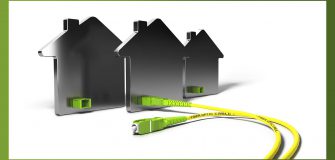Traffic Classification & Resource Management in Femtocell Networks
Share

Traffic classification, or differentiation, means creating different traffic groups based on the service quality needs of the generated traffic. Traffic classification is mainly used for charging purposes. Network providers want to charge users based on the service they are consuming from their networks. Users usually subscribe to the traffic class(es) through their service level agreement (SLA) made at the time of their service subscription.
Network providers promise to deliver the services that users sign-up for in their SLAs. Failing to deliver the promised level of service decreases the overall customer satisfaction.
In this article, I will use two terms for the “network” users are connected to. The traditional big cellular telecommunication network is called macrocell since the network covers large geographical areas and serves a large number of users. The term, femtocell, is used both for the geographical area that is served by the femto base station (femto access point), and for the femto base station itself. The network area served by femtocells is known as femtozone. Most of the time, network operators refer to the femto base station as femtocell, and I will do the same in this article.
Network providers should be able to deliver the same Quality of Service (QoS) and Quality of Experience (QoE) regardless of the network that users are currently connected to. QoS means ensuring the promised service levels at all times, regardless of the resource limitations in the network. QoS is usually used as a term to determine the quality requirements of the delivered service. On the user side, QoE is the widely used term to measure the quality of service experienced by the users in the network.
One can think of QoE as a projection of QoS (network side) onto the user domain. Users may request services from a macrocell or femtocell depending on whether they are outside or inside a building. That is, the serving network differs as users change their geographical location. When a user hands off (switching the serving network) from a macrocell network to a femtocell network, femtocells have to distinguish the traffic class of the user and start providing the same QoS level ((high throughput (video), low delay (VoIP)) which is specified in user’s SLA. Therefore, we require traffic classification in femtocell environments (femtozone) for usersʼ QoS and QoE continuity. Users requesting high definition video, high definition voice or high definition video conferencing should receive the same service without any QoS interruption in femtozone.
Business femtocells are expected to serve more users than home femtocells do. So, there may be a bottleneck when large number of users request high class traffic from the femtocell. One key point to note, increasing demand for HD of any sort (HDOA) will require capacity in a heightened way that even femtocells will not be able to handle. Some examples of HDOA traffic are listed below;
- HD Presentations and HD Video upload/download for marketing department
- HD Excel for finance and accounting department
- HD remote desktop and HD file transfer service (FTP) for engineers
- HD voice for management department
- HD email for human resources department
- HD GPS for supply chain and operations department, in order to track shipped and received products with high accuracy
Depending on their needs, one department can receive one or many of these services. The different services need to be delivered by business femtocells, and network providers should be able to configure femtocells remotely, or businesses are given an account through which they can configure the supported traffic classes in their femtozone.
Accounts are created in the policy server which locates in service operators’ core network. At the time of femtocell purchase, businesses will be given an account to login to the server and change the configurations of their femtocells. Traffic classifications created by the businesses may create some bottleneck in the backhaul (DSL connection), if large numbers of high class traffic users are entered into the femtozone.
Some users may only request HD video conferencing, while others may need HD voice, HD document (means that document response time is shorter) and HD web service at the same time. One may argue that femtocells are developed to provide high quality of service anyway, and there is not any bottleneck in the backhaul part of the network. However, the number of users and the number of HD traffic types will be increasing in the near future. Therefore, resource management will be a challenging problem for femtocell networks like it is for macrocell networks.
- Wi-Fi Design Strategies in a Converged World Webinar Questions Part 4: Industry Related Questions - December 4, 2017
- Wi-Fi Design Strategies in a Converged World Webinar Questions Part 3: iBwave Products - October 5, 2017
- Wi-Fi Design Strategies in a Converged World Webinar: Your Questions Answered. - August 9, 2017




















